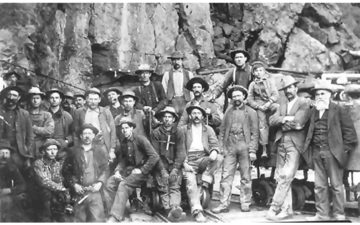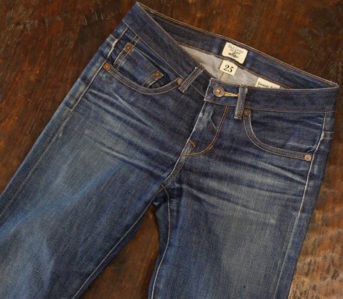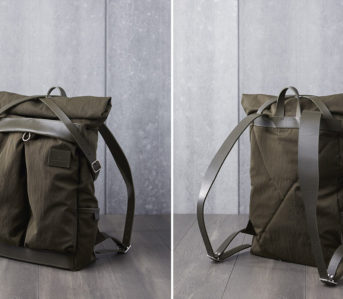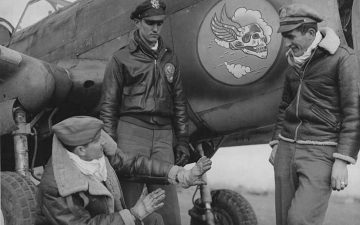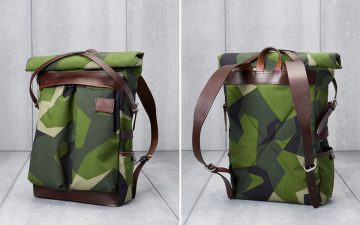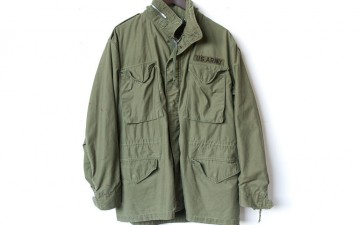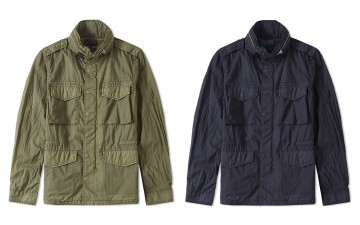The U.S. Army field jacket has gained almost mythical status among vintage-buyers and designers. Nearly every brand has either re-interpreted or replicated one of these famous pieces of military history. Modern American history may have immortalized the field jacket, but historically very few G.I.s actually enjoyed this piece of their uniform. Unlike a handsome flight jacket, or jauntily-cocked sailor’s cap, the field jacket was often a study in poor planning and general discontent.
On the eve of World War II, all nations were shedding the brightly-colored uniforms of the previous century in favor of more effective camouflage. Even in this new era of understated uniform, the U.S. Army’s duds were considered particularly unattractive. In the early days of WWII, Tommies and even American sailors and pilots disparaged the army boys as “Brown Jobs,” because their brown and khaki uniform’s unfortunate resemblance to vomit… and when dirty, feces.
From foxholes to the fashion mainstream, the field jacket is remembered now for its unparalleled functionality and versatility and in today’s article, we shall break down four such jackets and pay homage to the Brown Jobs and later Green Jobs, who were so unfairly teased.
M-41 (1940-1945)
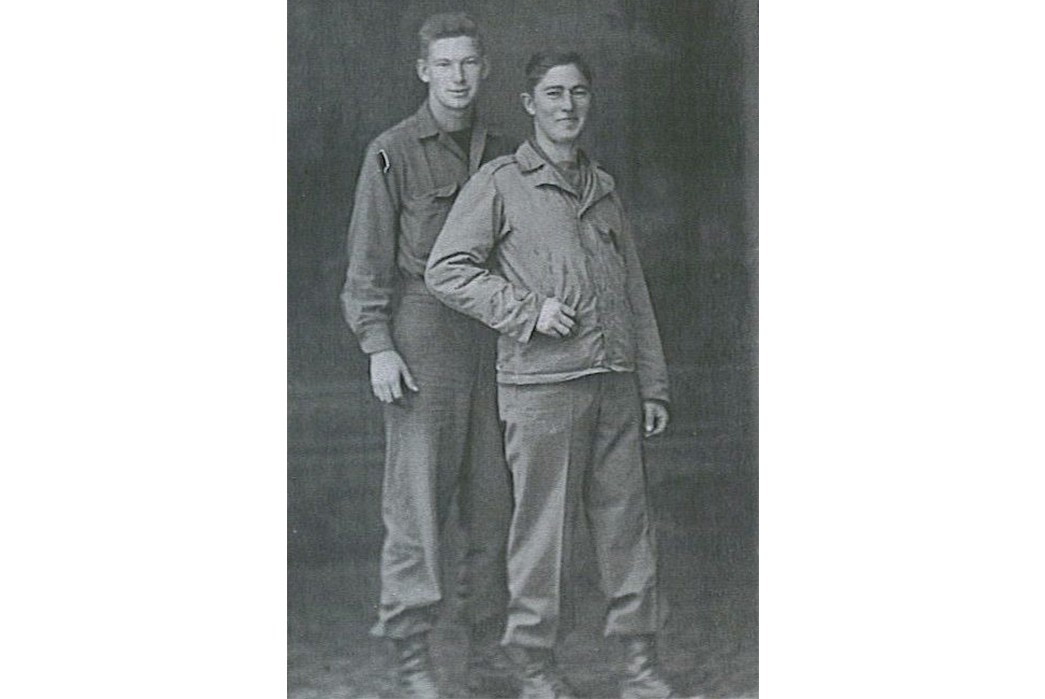
Soldier on the right is wearing the M-1941. Image via Wix.com
The M-1941 was a good idea, but ultimately a poorly-executed one. By the outbreak of WWII, the U.S. army uniform had become a tighter and impractical version of the uniform worn in WWI. In its current state, the field jacket was suitable only for garrison duty. The imperfect solution to this problem was the creation of the M-1939 Service Coat, a long, wool all-purpose coat that looked more like a history professor’s sport coat than a G.I.’s uniform.
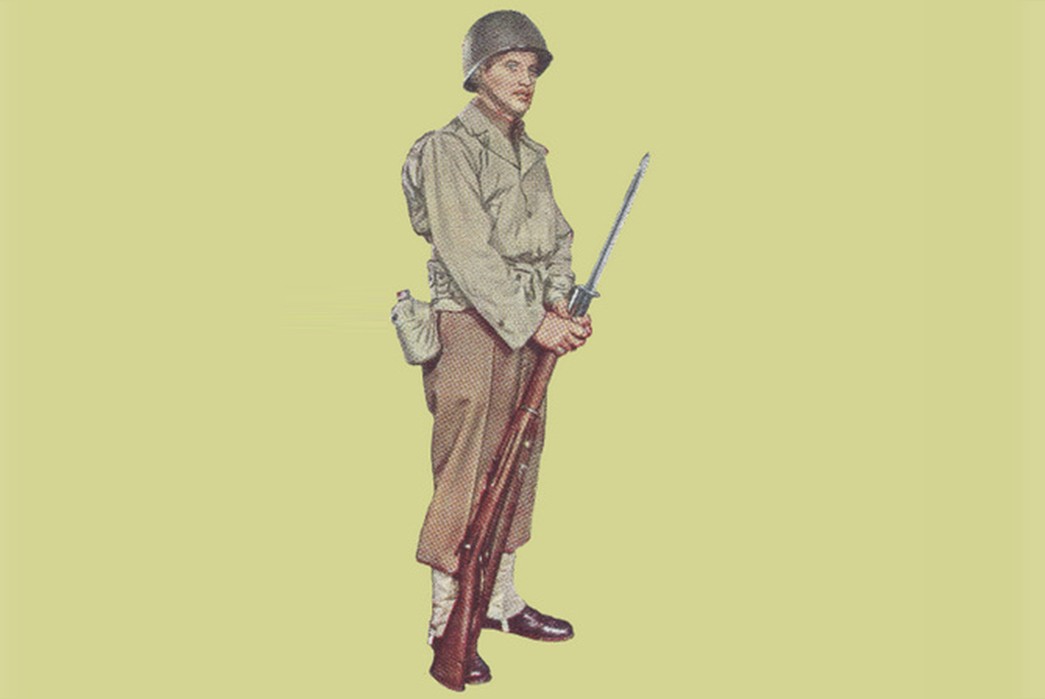
Temperate Zone Combat Field Uniform. Image via USww2uniforms
Anticipating wool shortages and recognizing the service coat’s impracticality, the Quartermasters developed the M-1941, based on a civilian windbreaker as suggested by Major General Parsons. The relatively lightweight jacket was made from a poplin outer and featured a wool flannel lining.
This jacket was referred to by one veteran as, “useless as a combat garment due to color, fit, and lack of pockets.” The light windbreaker inevitably got in the way in Pacific combat and was insufficiently insulated for the European theater. The M-41 may have been somewhat more waterproof and weatherproof than its predecessor, but it was still widely derided as a design blunder. Despite this, soldiers were seen in the M-41 for the duration of the war, not because they liked the piece, but usually because of material shortages and certain commanders’ personal preference.
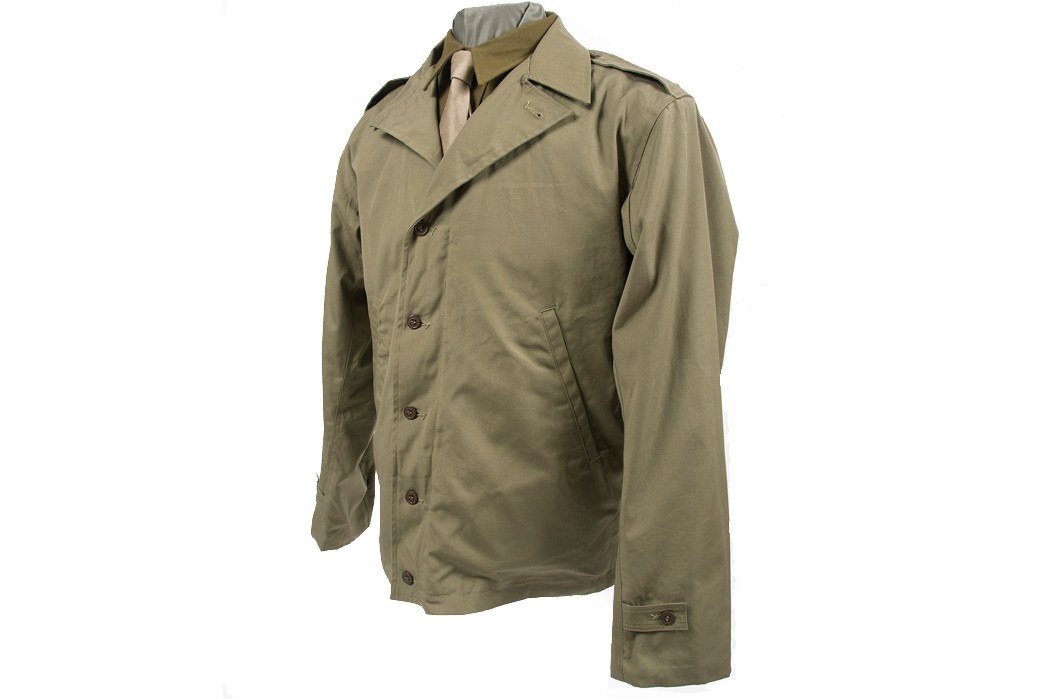
At The Front makes a painstakingly accurate reproduction available for $100 on their website.
M-1943 (1943-1950)
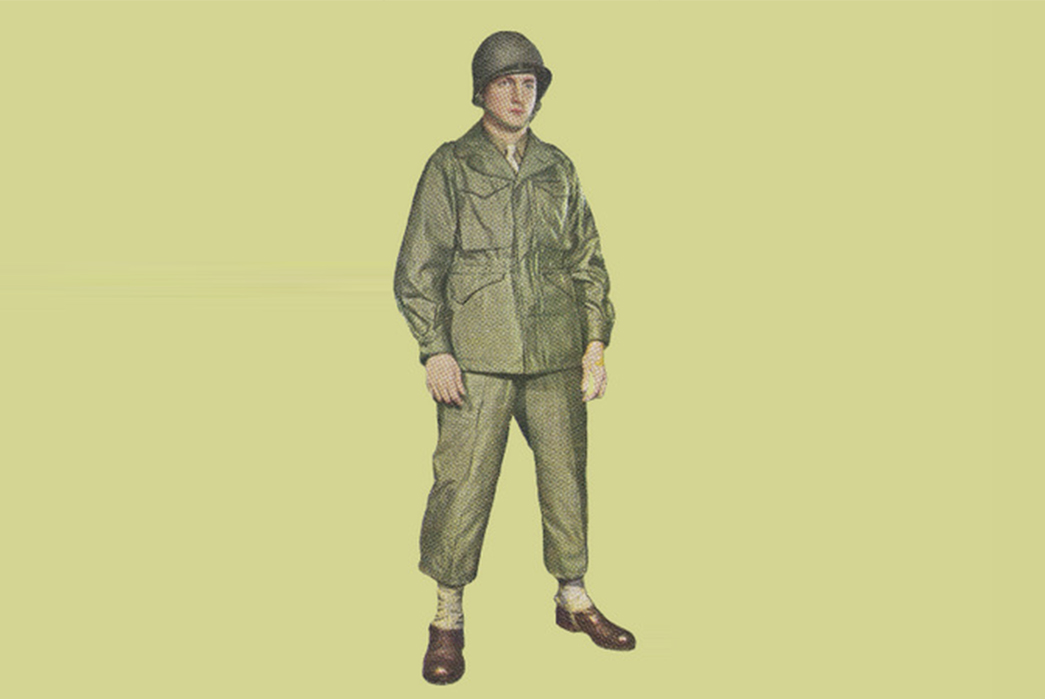
M-1943. Image via USww2uniforms
On August 12, 1943, the enlisted man’s prayers were answered. The arrival of the M-43 was a much-anticipated event and indicative of a more thoughtful phase in the design of infantry uniforms.
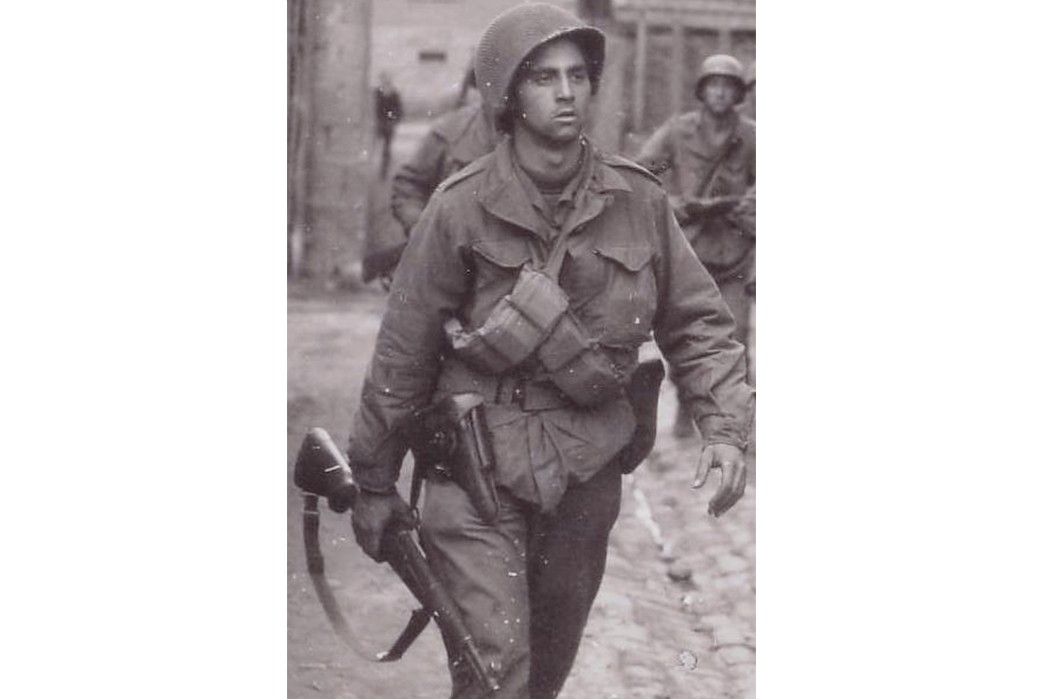
M-43 Field Jacket. Image via QM Fashion.
Lightweight like its predecessor, the M-1943 served essentially as a wind breaking layer that could be worn in any number of climates. Unlike its predecessor, the G.I.’s needs were actually considered during its design. More pockets, more versatility, and a darker shade of green to get people to stop calling soldiers Brown Jobs. The most important thing about the jacket was the layers that could be worn under it.
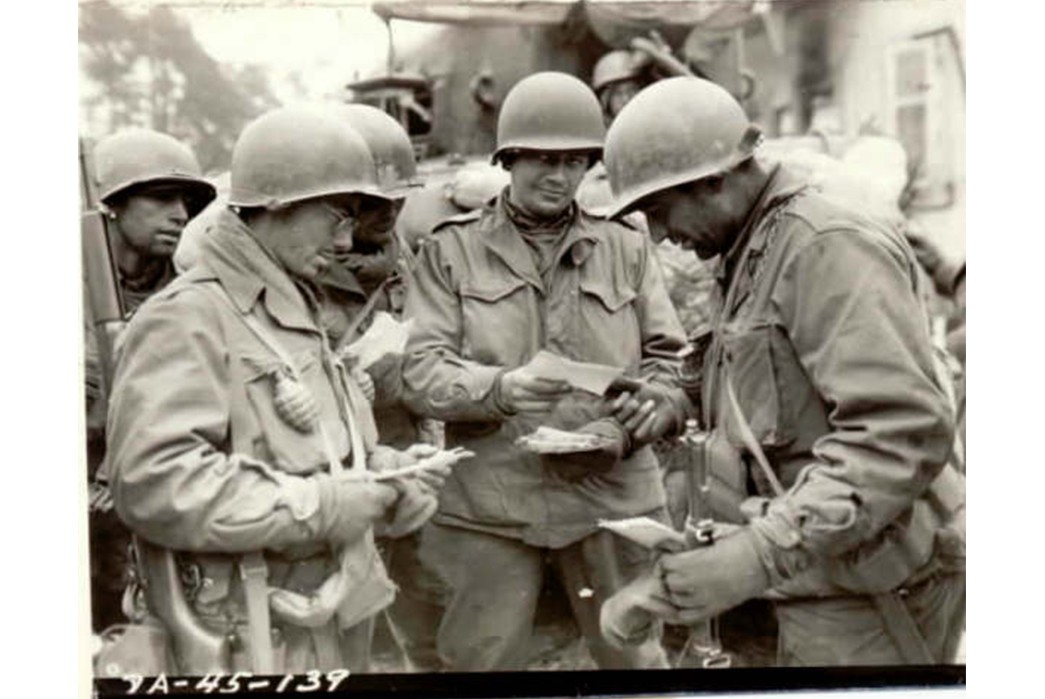
M-1943. Image via a War To Be Won.
The Field Jacket was a deceptively simple outer layer meant to fit over any number of other pieces of clothing. Jacket and pant pile liners came with the 43 jacket, which meant that for once, American G.I.’s were adequately equipped for the harsh conditions of winter fighting.
The M-43 with its long, bulky silhouette set the stage for the adoption of the famous Eisenhower Jacket, the short wool jacket that fit well under the weatherproof field jacket and further insulated troops in cold conditions. While a technically excellent piece of military clothing, the M-43 took far longer than expected to issue and many of its necessary components (the pile liner) rarely made it to the troops who needed them. The M-43 was then superseded by the M-50, which was essentially the same garment but with interior buttons that made it easier to attach the liners.
American military (and civilian casual) contractor Cockpit USA make an M-43 that’s available for $120 on their website..
M-51 (1951-1965)
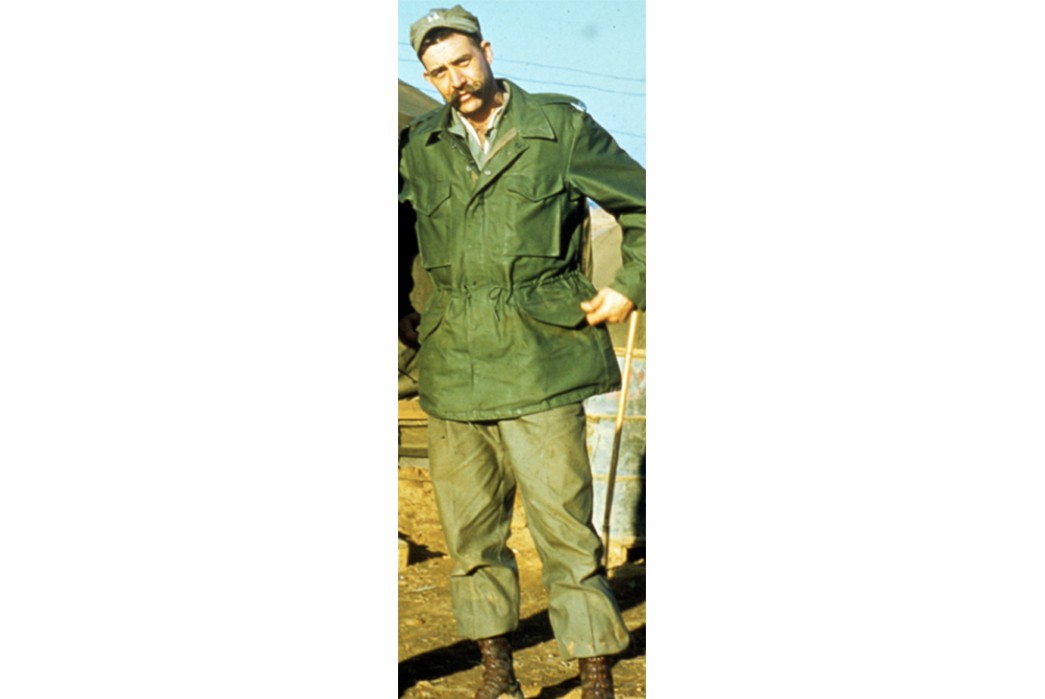
M-1951 jacket. Image via QM Fashion.
Military uniform design is a constant battle between out-of-touch Army brass and common sense. The M-1951 was a brief victory on the side of sense, but only because its previous incarnation had been so badly received.
The M-1950 had been a divisive uniform that made one important advancement, (interior buttons for liners) but sacrificed much of what made the M-1943 great. Because the M-1950 was meant to function as both dress and combat uniform, details that would have made it an all-weather survival garment, like the button-closures at the throat, were omitted.
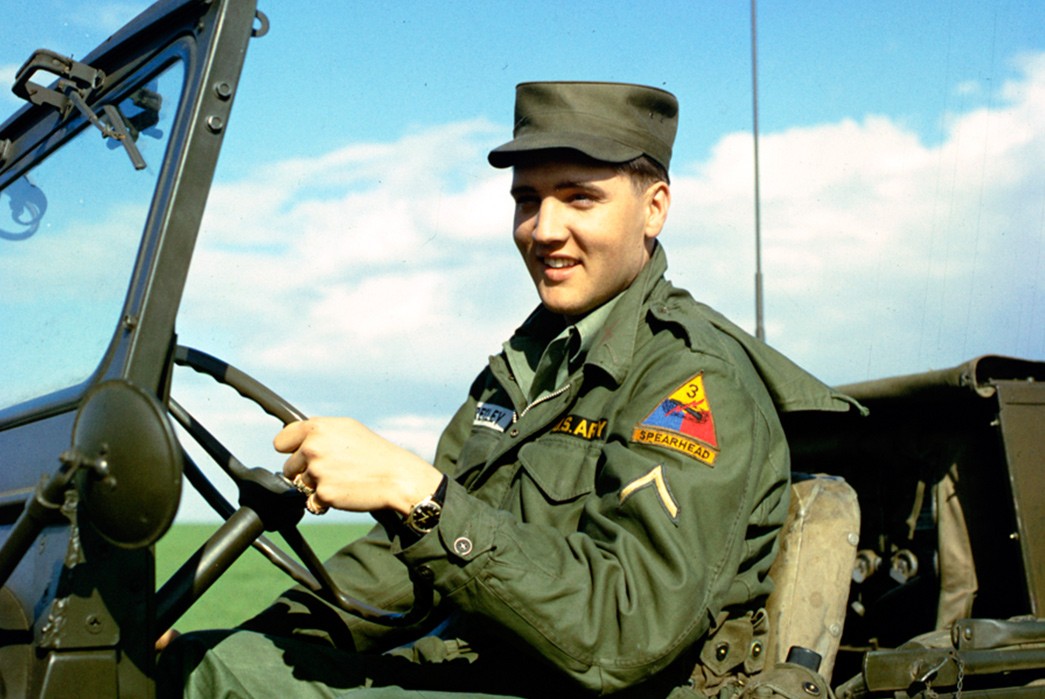
M-51 on some random guy. Who tf is this guy even? Image via elvisarmynews.
With the slimmer, markedly less versatile M-1950 fully phased out, the army did its best to correct its previous mistakes. The result was pretty much the same thing as the M-1943. Back to square 1.
The M-1951 was made from a 9oz., weather-resistant fabric and with the exception of snaps and a zipper, largely resembled the M-1943. Previous efforts to formalize the field jacket had made it less effective than before, so the 51 went back to its roots as a oversize layering piece. The jacket came in the now-famous OG 107 color and had an attachable hood for extra functionality. Ironically, even though the M-51 was consciously a step away from previous dressy uniforms, many soldiers in later wars preferred it to its successor: the M-65, because it looked more presentable when starched and pressed.
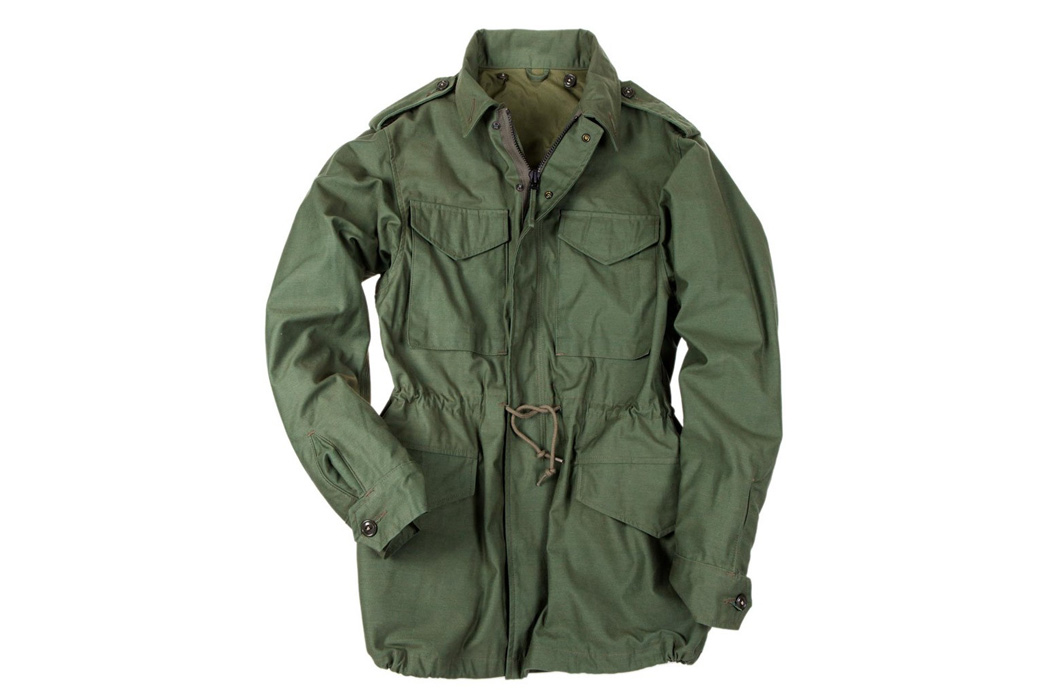
You can find a repro M-51 for $475 at Cockpit USA.
M-1965 (1965-2005)
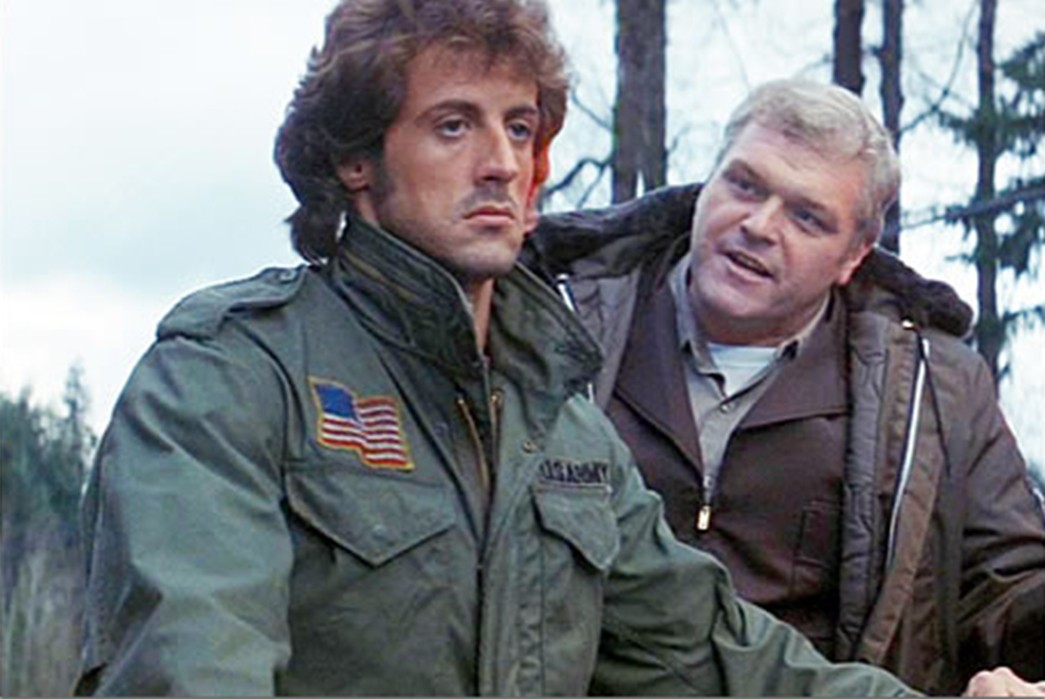
M-1965. Image via Clint Weldon.
The M-65 jacket is perhaps the most iconic of the above field jackets. The jackets of World War II may have achieved some popularity for their association with American victories during that conflict, but the M-65 is all the more classic for its role in an American quagmire: Vietnam.
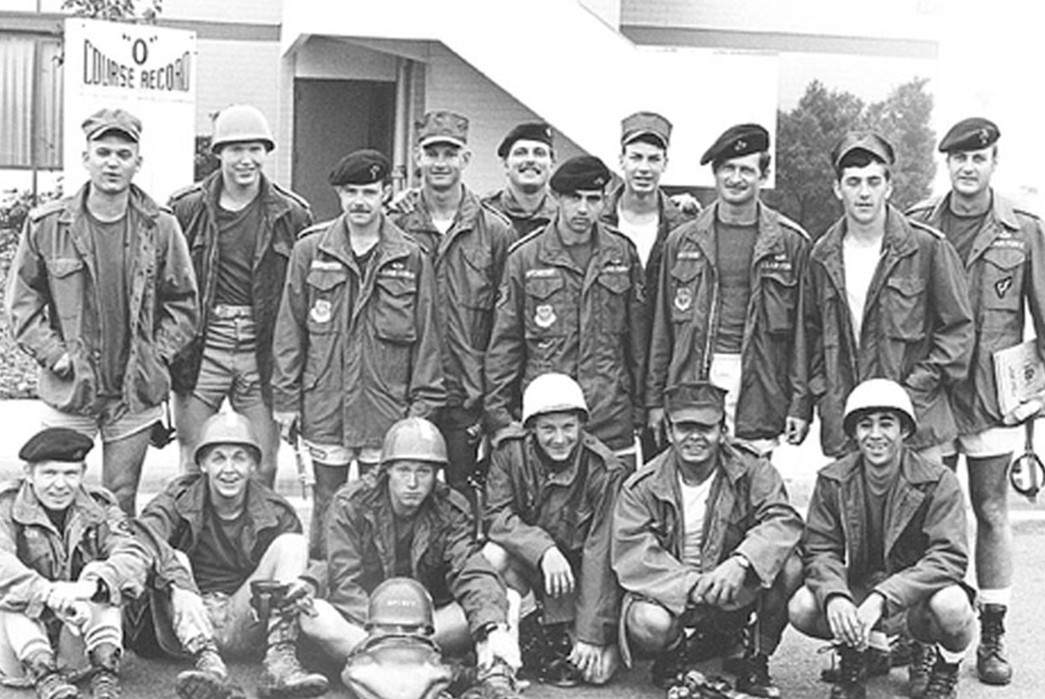
Guys in M-65s, with a few M-51s featured as well. You can tell the M-51 by its shirt collar, whereas the 65 has that chunkier collar for the collapsible hood.
The M-65 arrived on the scene in, you guessed it, 1965, taking the place of the M-51. Its most notable differences included a built-in hood that could be folded into the collar and velcro on the sleeve cuffs and collar. Like the M-43 and M-51, the jacket had four generous pockets and was meant as a waterproof layering piece. It had internal buttons to allow the addition of a liner and button-holes on the collar for a separate extreme-weather hood.
The M-65 saw extensive use in Vietnam, albeit without the liner and extra hood. Although too warm for the majority of humid jungle combat, the jacket came in handy especially in the colder, post-Monsoon months.
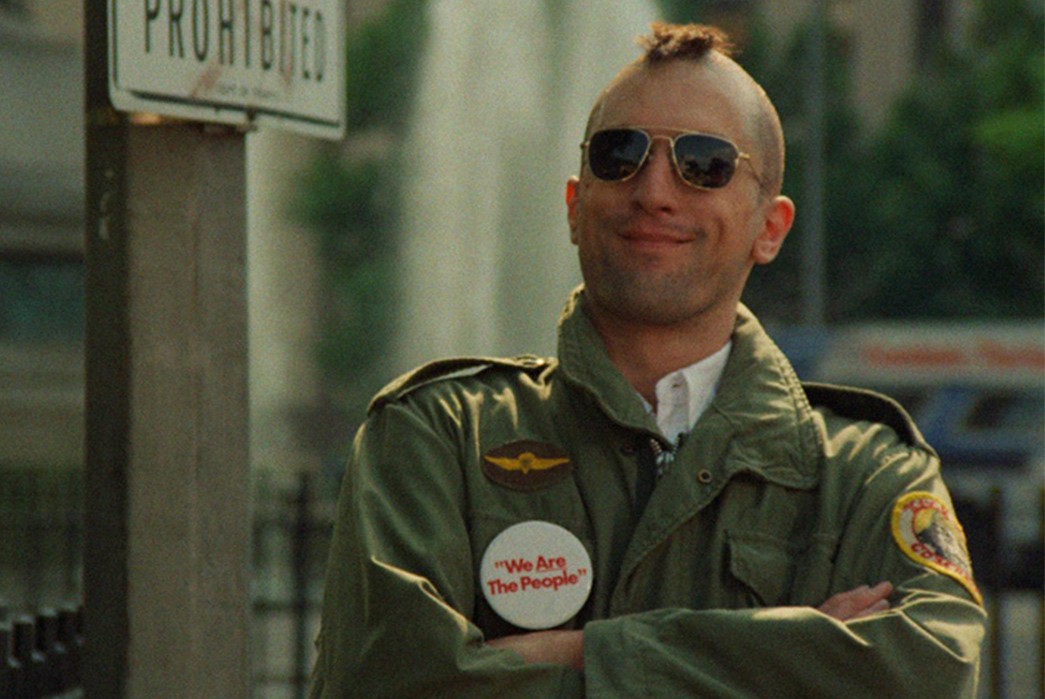
Robert DeNiro in Taxi Driver. Image via Columbia Pictures.
Alpha Industries was largely responsible for the creation and production of the M-65 and had to create two additional companies to make civilian reproductions in response to post-war demand. Despite the M-65’s association with a hugely unpopular war and emergent military-industrial complex, the jacket gained a following among the counter-culture.
Its slouchy profile worn by anti-war protesters and hippies partially divested the jacket from its previous military context. Robert De Niro in Taxi Driver (1976) and Woody Allen in Annie Hall (1977) both wear the M-65 and neither is an especially well-adjusted member of society. The M-65 was a well-made field jacket and a powerful symbol that, depending on the wearer, could subvert or support a new era of unpopular American militancy.
The M-65 would remain officially in use through 1980, when the entire U.S. military overhauled its clothing for standardized Battle Dress Uniforms (BDUs). The M-65 itself continued in different camo prints, but the underlying pattern remained through 2005, when the entire system was overhauled again for the Army Combat Uniform (ACUs), which is still in issue today.
You can pick up an M-65 made better than the original from Japanese repro masters The Real McCoy’s $622 at Lost & Found.
For a full (and funnier) overview of American military uniforms, check out Uniforms by Paul Fussell.


